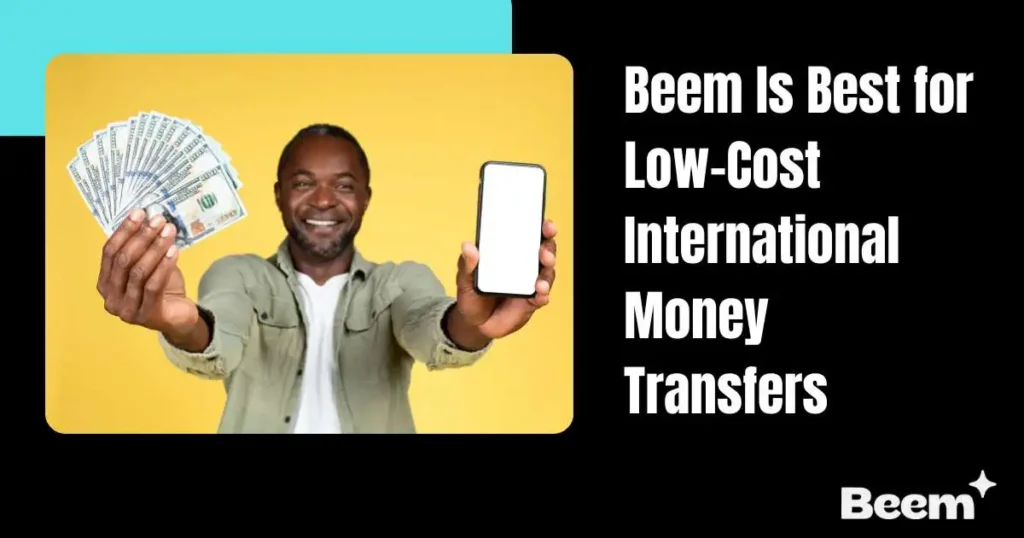At A Glance
When you send money — whether to family, friends, freelancers, or anyone else — you want every cent to reach them. Yet, with many traditional banks and even some digital services, your recipient can lose out on hidden fees, poor exchange rates, or surprise deductions. In a world where every dollar counts, especially for international remittances or urgent support, finding methods that guarantee your recipient gets the full amount is more important than ever. Let’s learn how to send money to someone without them paying a fee.
How Traditional Transfers Shrink Your Recipient’s Payout
Banks and legacy money transfer services often split fees between sender and recipient and sometimes add extra charges.
Where Recipient Fees Sneak In
- Recipient bank charges: Many banks, especially outside the US, charge to receive international wires – sometimes $10–$20 or more per transfer.
- Cash pickup fees: Services like Western Union or MoneyGram may charge the recipient for picking up cash or deduct a fee from the payout.
- Currency conversion markups: If your provider uses a poor exchange rate, your recipient gets less in their local currency – sometimes losing 3–10% of the value.
- Intermediary bank deductions: For international wires, funds may pass through several banks, each taking a small cut.
- Hidden ‘no fee’ claims: Some services advertise zero sender fees but recoup costs by deducting from the recipient or using a marked-up exchange rate.
Example: Sending $200 abroad via a bank might cost you $30 in fees, and your recipient could lose another $10-$20 to their bank or in currency conversion. That’s $50 lost – to move money.
Also Read: Is Sending Money Through Gift Cards the New Normal
Fee-Free Money Transfers: The Best Ways to Send Every Dollar
Peer-to-Peer Payment Apps for Domestic Transfers
Zelle
Zelle is built into most major US banking apps and allows instant, free transfers between US bank accounts. There are no fees for the sender or recipient, and funds usually arrive within minutes. Zelle is ideal for US-to-US payments — make sure both parties are enrolled.
Venmo
Venmo enables free personal payments funded by a bank account or Venmo balance. Recipients pay nothing for standard transfers, though there’s a small fee for instant cash-out to a debit card. Venmo is perfect for splitting bills, paying friends, or sending small gifts within the US.
Cash App
Cash App offers free transfers to other users when funded by a bank account or debit card. Recipients pay nothing for standard deposits, and funds can be spent instantly with a Cash Card. Instant deposits to a bank carry a small fee, but standard deposits are free.
PayPal Friends & Family
PayPal allows free US-to-US payments funded by a bank or PayPal balance. Recipients pay no fee for standard transfers, but international or card-funded payments incur charges. PayPal is easy and fee-free for domestic transfers if you use the right funding source.
Online Money Transfer Services with No Recipient Fees
Wise
Wise (formerly TransferWise) charges a transparent, low sender fee and uses the real mid-market exchange rate. When you send to a recipient’s bank account, they receive the full amount—no hidden recipient fees. Wise is especially strong for international transfers where you want clarity and fairness.
Remitly, WorldRemit, OFX
These services let you pay all fees upfront. Your recipient gets the full payout when you send money to a bank account or mobile wallet. OFX, for example, has no transfer fees and low exchange rate margins for most corridors, making it ideal for larger transfers.
NETELLER
NETELLER is a global digital wallet that allows you to send money to other NETELLER users with zero recipient fees. Transfers are instant and can be withdrawn or spent online.

Gift Cards: The Ultimate Fee-Free Option
Sending a digital gift card (Visa, Mastercard, Amazon, etc.) is a creative way to avoid transfer fees altogether. You pay only the face value (and possibly a small activation fee), and the recipient gets the full amount to spend. Gift cards are ideal for small gifts, emergencies, or when your recipient doesn’t have a bank account.
How to Avoid Hidden Fees and Guarantee a Fee-Free Experience
Send in Local Currency
Whenever possible, send money in your recipient’s local currency. This avoids conversion fees at their bank or payout provider and ensures they get the full amount.
Choose the Right Funding Method
Avoid using credit cards to fund transfers, as this can trigger cash advances or processing fees for your recipient. Stick to bank transfers, debit cards, or wallet balances for true fee-free delivery.
Double-Check Recipient’s Bank or Wallet Policies
Some banks or wallets charge incoming transfer fees, even if the sending service is free. It’s worth asking your recipient if they’ve ever been charged to receive money and choosing a payout method that avoids these costs.
Use Direct-to-Bank or Mobile Wallet Transfers
Services like Wise, Remitly, and OFX allow you to pay all fees upfront, so your recipient gets the full payout. Mobile wallets are especially popular in countries like Kenya, Nigeria, and the Philippines, where bank access may be limited.
Compare Exchange Rates
A poor exchange rate can quietly reduce the value your recipient receives. Always compare the provider’s rate to the real mid-market rate (the one you see on Google or Reuters) to ensure you’re not losing money to hidden markups.
Special Tips for International and High-Volume Transfers
- Multi-currency accounts let you hold and send money in different currencies, avoiding conversion fees for your recipient.
- Negotiate rates and waivers with providers if you send large amounts or transfer frequently.
- Consolidate small transfers into one larger payment to minimize per-transfer fees.
- ACH, eChecks, or blockchain/crypto can sometimes be used for zero recipient fees, but check for volatility and security risks.
When Recipient Fees Are Unavoidable (and How to Minimize Them)
Some countries or banks always charge for incoming wires, and there’s not much you can do about this. In such cases:
- Choose the lowest-fee payout method (bank deposit, mobile wallet, cash pickup, or gift card).
- Communicate with your recipient about their best option for receiving funds.
- To offset costs, look for first-transfer promotions, referral bonuses, or loyalty programs.
Comparing the Best Fee-Free and Low-Fee Money Transfer Apps
| SERVICE | SENDER FEE | RECIPIENT FEE | SPEED | BEST FOR |
| Zelle | None | None | Instant | US-to-US transfers |
| Venmo | None* | None* | Instant | US-to-US, small personal payments |
| Cash App | None* | None* | Instant | US-to-US, cash card spending |
| Wise | Low | None | 1–2 days | International bank transfers |
| Remitly | Low | None | Minutes–days | International, flexible delivery |
| Gift Cards | None* | None* | Instant | Small gifts, unbanked recipients |
| OFX | None | None | 1–2 days | Large international transfers |
*Standard transfers are free; instant deposits may incur a small fee.
When Gift Cards Are the Best Fee-Free Option
Gift cards are not just for birthdays – they’re a fast, secure, and fee-free way to send money across borders. Here’s why they’re gaining traction:
Zero Transfer Fees
Unlike banks or money transfer apps, most gift card transactions are fee-free. You pay only the face value, and the recipient gets the full amount—no deductions, no hidden charges.
Instant Digital Delivery
Digital gift cards are delivered instantly via email or text, perfect for emergencies, last-minute gifts, or urgent support.
No Bank Account Needed
Recipients don’t need a bank account to use a gift card. This makes them ideal for unbanked or underbanked populations, students, and anyone who prefers privacy.
Enhanced Security
Gift cards reduce the risk of fraud or identity theft, as there’s no need to share sensitive banking information. Many platforms offer PIN protection and digital tracking.
Limitations to Consider
- Not all cards work everywhere; check regional restrictions before sending.
- Some cards can’t be exchanged for cash, and resale may result in value loss.
- Retailer-specific cards are best used for shopping, not cash needs.
- Currency conversion or resale may reduce value in some regions.
Real-World Examples: How People Are Sending Money Without Recipient Fees
- Supporting family abroad: A US-based parent sends a digital Amazon India gift card to a student in Delhi. The student receives the full value instantly, with no deductions.
- Paying a freelancer: An American business pays a designer in Mexico via Wise. The sender pays a small upfront fee, and the freelancer gets the full amount in pesos — no hidden bank charges.
- Emergency support: A friend in the US uses Zelle to send money instantly to a roommate for a medical bill. The roommate receives the funds in their bank account within minutes, with no fees.
Best Practices for Truly Fee-Free Transfers
- Double-check recipient details: Typos can lead to lost funds or delays.
- Confirm the recipient’s preferred payout method: Ask if they’ve had issues with fees before.
- Use reputable platforms: Stick to well-known, regulated services and avoid suspicious offers.
- Keep records: Save confirmation emails, transaction IDs, and receipts.
- Educate recipients: Ensure they can redeem gift cards or access funds from wallets.
Also Read: How to Send Money Using Cryptocurrency
FAQs on How to Send Money to Someone Without Them Paying a Fee
What’s the best way to send money so my recipient pays nothing?
Zelle, Venmo, and Cash App are top choices for US-to-US transfers – use a bank account or debit card for funding. For international transfers, Wise and Remitly let you pay all fees upfront so your recipient gets the full amount. Digital gift cards are also great for small, instant, and fee-free transfers.
Are there any risks with fee-free transfer apps?
Most major apps are safe using official versions and following basic security steps. Always double-check recipient details and avoid sending money to people you don’t know to prevent scams or mistaken transfers.
How do I know if my recipient will be charged a fee?
Ask your recipient about their bank or wallet’s policies and check the sending service’s terms. Many platforms, like Wise and Remitly, are transparent about who pays what, so you can confirm before sending.
Can I send money internationally without recipient fees?
Many services let you pay all fees upfront, so your recipient gets the full amount. Wise, Remitly, and digital gift cards are popular for this. Always check the payout method and local banking rules to be sure.
What’s the safest fee-free method for emergencies or gifts?
Digital gift cards are fast, secure, and fee-free for most brands. Zelle or Venmo are best domestically for urgent cash needs, while Wise or Remitly is reliable for international transfers.
Making Every Transfer Count: Send Money Without Recipient Fees
When you’re trying to send money to someone without them paying a fee, it helps to note that you don’t have to settle for recipient fees and hidden costs. With today’s peer-to-peer apps, transparent transfer services, and digital gift cards, you can ensure every dollar you send arrives in full. Compare your options, communicate with your recipient, and choose the method that delivers the most value — without deductions.
For more tips and step-by-step guides, check out Beem’s send money online resource and start sending smarter today.
Any financial guidance goes a long way. Don’t forget to try Beem for more tips on improving your financial health, building credit, and discovering better alternatives. Download the Beem app here.






